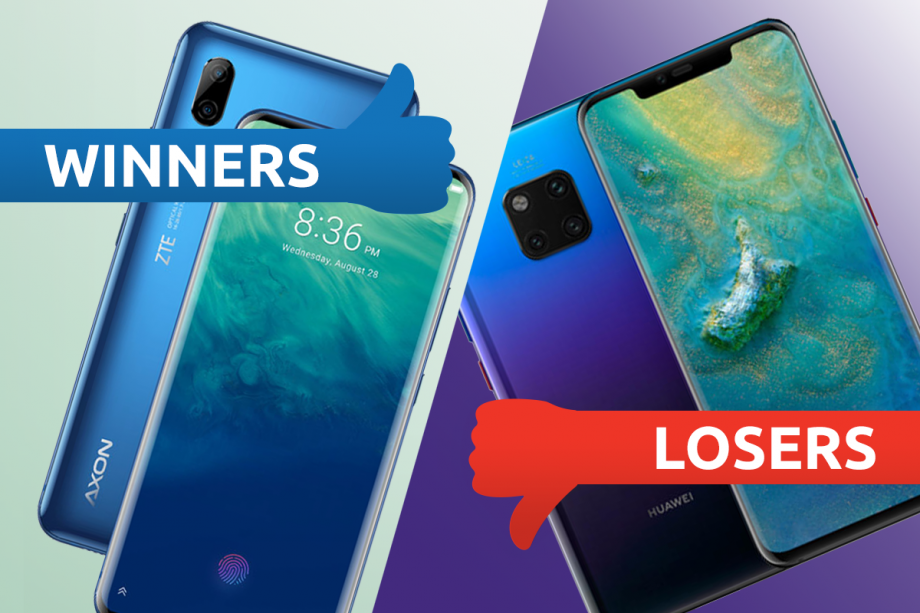Winners and Losers: Huawei’s latest Google loss and ZTE’s triumphant US return

It seems there’s only room for one Chinese conglomerate in Trump’s America and this week it was ZTE’s turn to be in the States’ good books, as Huawei experienced some major push backs for its incoming flagship the Mate 30.
After what almost seemed like a good week for the brand, Huawei’s luck seems to have done a 180 and its future with Android doesn’t look so bright anymore.
Huawei was one of our winners last month after the UK government didn’t completely condemn the company’s participation in the next-gen 5G data network over national security concerns. For anyone else, being left in limbo as to whether it would be allowed to continue its work overseas would be bad news, but for a company as hard done by in 2019 as Huawei, no news is actually good news.
Unfortunately, this didn’t give the company far to fall when it reluctantly revealed the latest update in the Huawei Google saga.
Meanwhile, ZTE took the opportunity to announce that it would finally be making its American comeback after years of silence thanks to, you guessed it, the US government.
Winner: ZTE
ZTE came out of hiding this week to announce that its Axon 10 Pro smartphone would be available to pre-order in the US after several years of silence from the mobile manufacturer.
If you don’t remember ZTE’s national security scandal (because apparently everyone has one these days), the US briefly banned the company from teaming up with American brands in 2017. It all kicked off after ZTE was caught violating sanctions – sneaking US-made mobile parts to Iran and North Korea – and rewarding the executives involved with bonuses.
The company was eventually able to slip out (somewhat) unscathed by striking a deal with President Trump that required it to pay over one billion dollars to the country. While this doesn’t sound like the kind of deal a ‘winner’ would make, shaking hands with Trump meant that ZTE was able to retain its ties with US companies like Qualcomm and continue releasing it’s smart devices across the pond.
Not only is ZTE now back with the Axon 10 Pro but, thanks to the dropped sanctions, it still gets to take advantage of Qualcomm’s Snapdragon processors.
Loser: Huawei
It’s been a rough week for Huawei. After celebrating a win – or, rather, a week without a loss – last month, the Chinese tech giant was hit with the latest in a long list of setbacks by the US government.
Huawei revealed that its next flagship, the Huawei Mate 30, wouldn’t be shipping out with all of the apps Android customers have come to expect, thanks to sanctions slapped on the manufacturer earlier this year.
While Huawei could take this opportunity to show off the shiny new Harmony OS it’s been developing since its future first starting looking uncertain, the company has decided to stick with a more bare bones version of Google’s operating system – Android’s Open Source Project – for the time being. Huawei bosses have confirmed in the past that the company will only ship out its Harmony-powered smartphones if the company is fully cut off from Google in order to maintain an ecosystem consistent across all of its devices.
While the Open Source Project is still powered by Android, the Mate 30 is set to miss out on a bunch of popular Google-made apps. Huawei users won’t see their phones come with the Google Play Store, Google Assistant, Gmail, Google Photos, Google Maps, Google Drive or Google Duo apps. They won’t even be able to access YouTube without opening up their (non-Google) browser and searching “cat videos” there – which just seems like too many steps to be honest.
Of course, loyal Huawei fans will be happy to hear that they can continue to side-load Google apps as APKs if they miss them, but the extra steps may be enough to sway a crowd of potential customers away from splashing out for the new Mate 30 this year.


